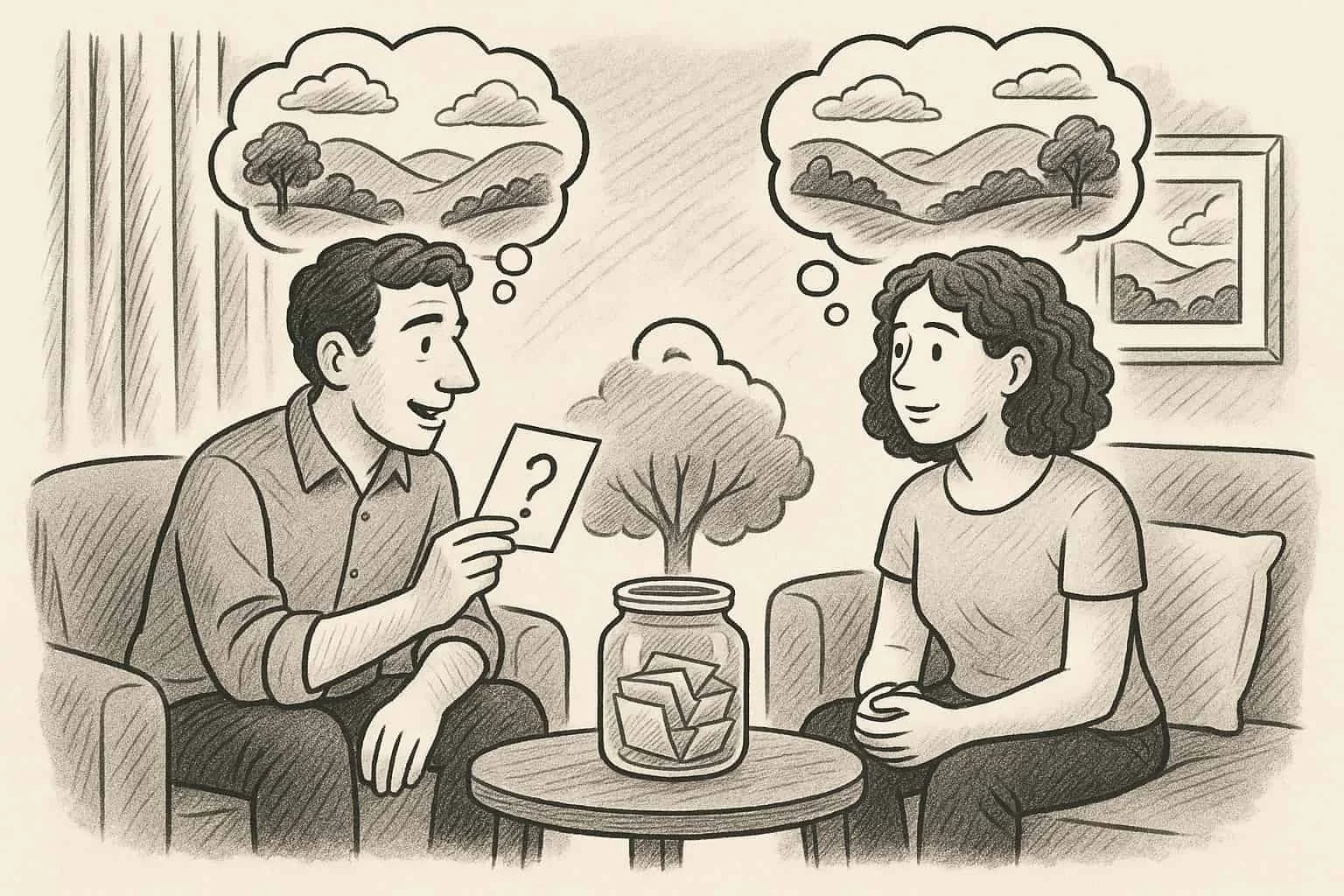DOWNLOAD: Curious Communication for Couples
This exercise helps couples practice curiosity-based communication — exploring each other’s thoughts and feelings without debate, advice, or judgment.
Here are the instructions included in the download…
Creating Curious Conversations
by Tim Tedder, LMHC
Purpose: This exercise helps couples practice curiosity-based communication — exploring each other’s thoughts and feelings without debate, advice, or judgment. Think of it as wandering through each other’s inner worlds, just to admire the view.
Preparation
Set a Time & Place
Choose a time when you both can be present and undistracted. Phones off, doors closed, hearts open.Adopt a Giving Mindset
Approach this as a gift to your partner, not a transaction. The goal is to understand, not persuade.Create Talk Topics
Each of you writes at least five open-ended questions (requiring more than yes/no answers).
Focus on personal, emotional, or meaningful topics — not just daily logistics.
Avoid “loaded” questions that carry blame or hidden criticism.
Optional: Star one or two “stretch” questions that feel deeper or more vulnerable.
Assemble the Question Jar
Write each question on a small, identical slip of paper.
Fold them and place them all (at least 10 total) in a jar, mug, or small box
Conversation Instructions
Draw a Question
Flip a coin to decide who goes first.
Draw one question. If you don’t want to answer it, put it back and draw a second — you must answer the second.
Answer as the Speaker
Share your thoughts honestly and kindly.
Go deeper than the obvious — try to reveal something your partner may not know.
If sharing difficult feelings (fear, hurt, disappointment), do so to be understood, not to blame.
Listen with Curiosity
Just listen. No advice, no counterpoints, no solutions.
Reflect what you heard (content + feeling):
“It sounds like you felt ___ when ___.”Ask 1–2 follow-up questions that start with “What…” or “How…”
Switch Roles
The listener becomes the speaker.
They can answer the same question or draw a new one. (If drawing a new one, discard the unused question.)
Timing Tip: Plan on two rounds each — about 5 minutes per person.
Afterward
Share what you learned or appreciated from your partner.
Reflect briefly together:
“What surprised you?”
“What will you carry with you from what you heard?”
End with a warm gesture — a smile, hug, or words of gratitude.
Do this twice a week for lasting impact.
Sample Questions
How have you changed in the past year?
What do you worry about that I don’t know about?
What was one of your best childhood memories?
How could we have more fun together?
What is one thing you wish you could change about yourself (not your circumstances)?
What would you like our life to be like in five years?
How would you compare yourself to your parents?
What’s an unfulfilled dream you still carry?

